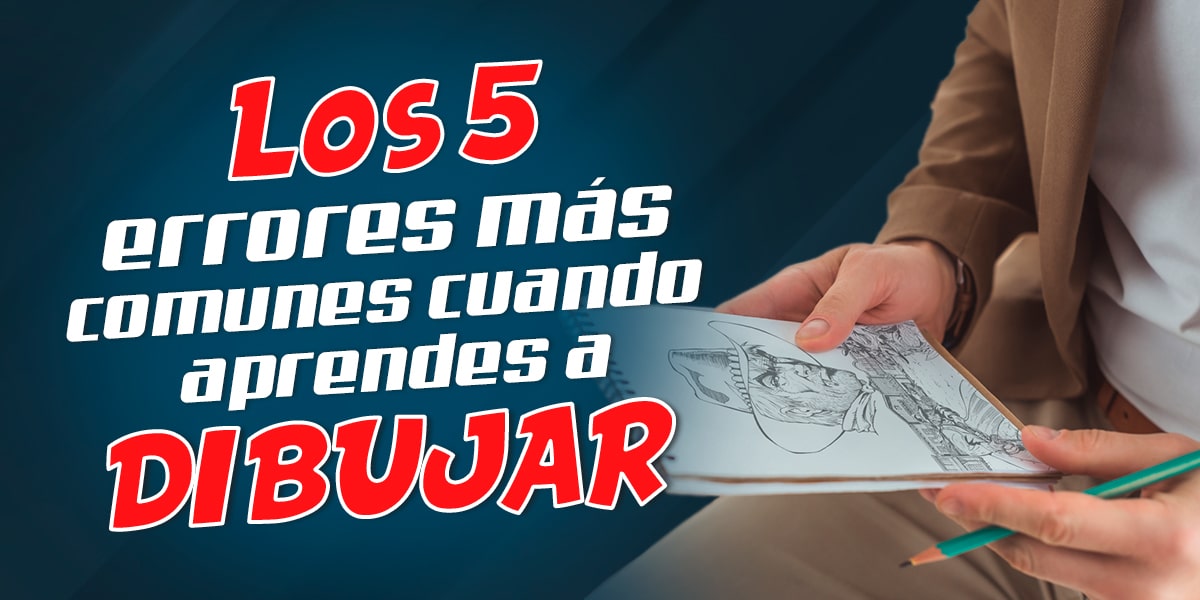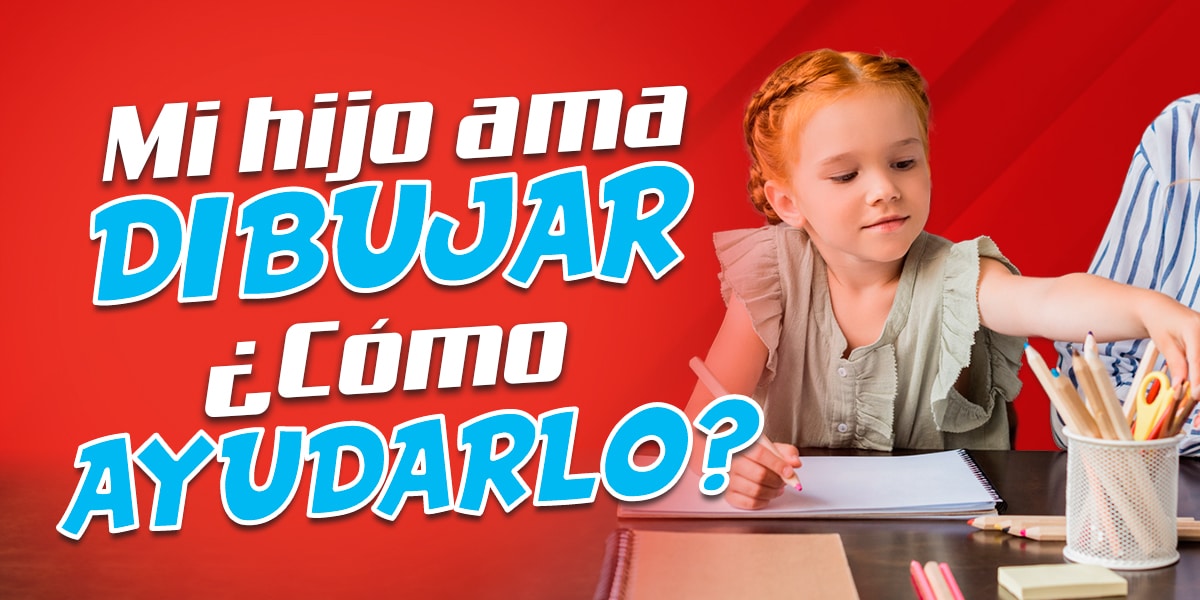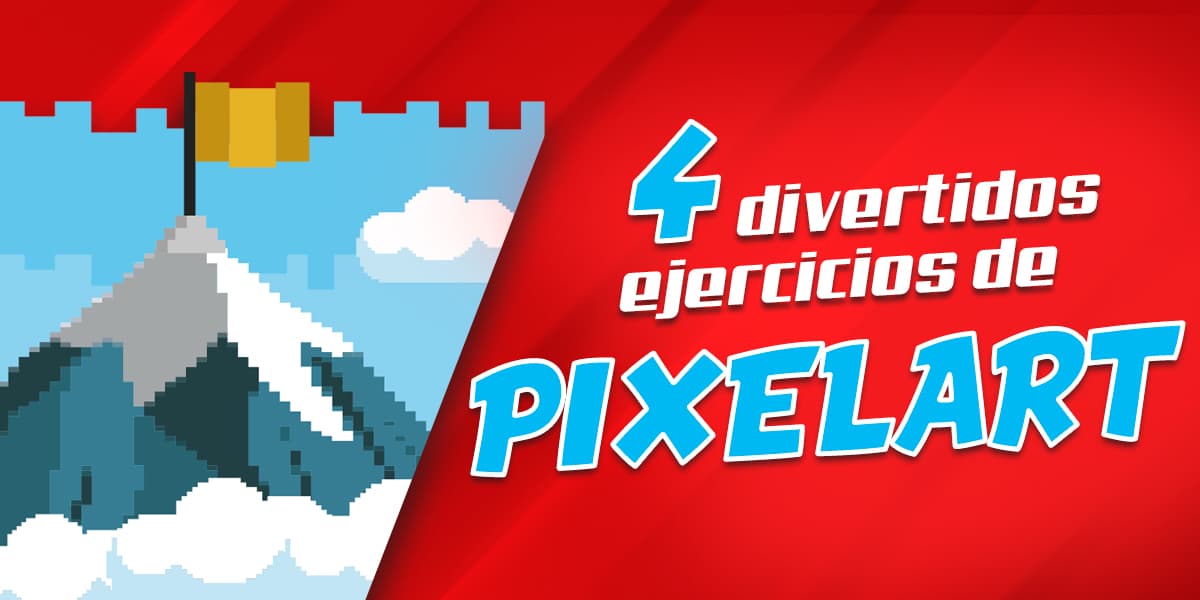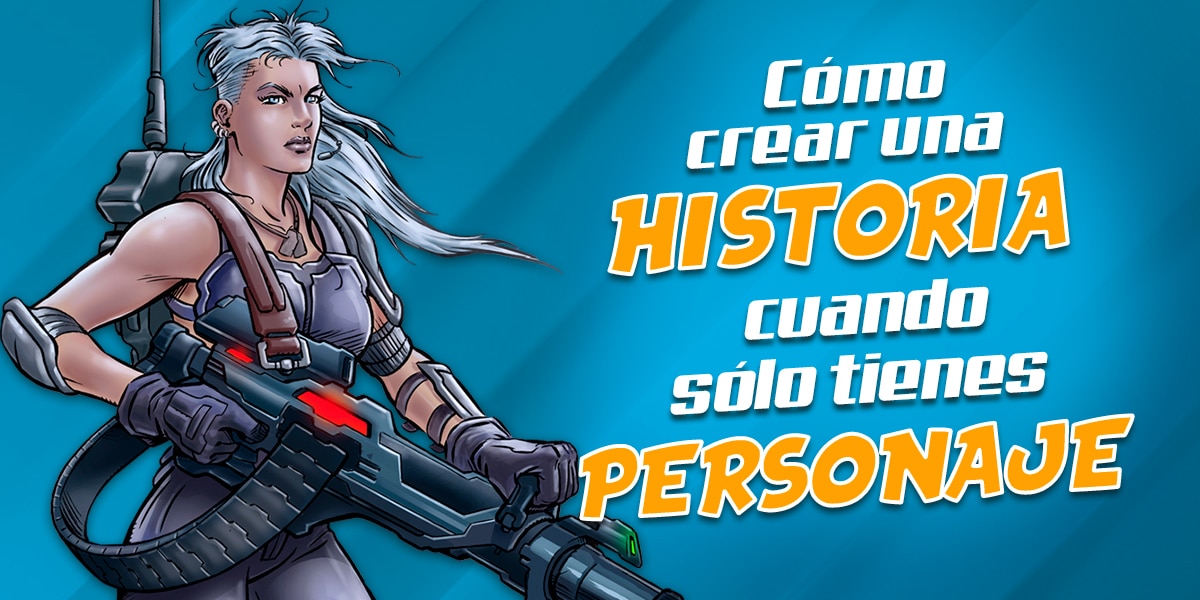Los 5 errores más comunes cuando aprendes a dibujar
¿Alguna vez has sentido que tus dibujos no avanzan como esperabas? ¿Te frustras al ver que tus trazos no reflejan lo que tienes en mente? No estás solo. Muchos artistas principiantes enfrentan desafíos similares en su camino hacia la maestría del dibujo. En este artículo, desentrañaremos los 5 errores más comunes que cometen los aspirantes a artistas y te brindaremos valiosos consejos para superarlos.
Prepárate para descubrir cómo pequeños ajustes en tu enfoque pueden transformar drásticamente tus creaciones. Ya sea que sueñes con dominar el manga, perfeccionar tus retratos o crear mundos fantásticos, estos tips te ayudarán a evitar obstáculos comunes y a desbloquear tu verdadero potencial artístico. ¡Sigue leyendo y da el primer paso hacia una nueva etapa en tu viaje creativo!
Por Nicole Goodnames
El fascinante mundo del dibujo y la ilustración
Cuando nos sumergimos en el universo del dibujo, nos encontramos con un vasto océano de posibilidades creativas. Es natural sentirse abrumado por la diversidad de estilos, técnicas y maestros que han dejado su huella en el arte. Quizás te hayas maravillado ante los intrincados detalles de un manga, o tal vez te haya cautivado la expresividad de un retrato al carboncillo. Sea cual sea tu inspiración, el deseo de alcanzar esas cumbres artísticas puede ser tan motivador como desafiante.
En la era digital, tenemos acceso a una cantidad sin precedentes de recursos para aprender a dibujar. Desde tutoriales en video hasta libros electrónicos, pasando por cursos en línea y comunidades de artistas, las opciones son prácticamente infinitas. Esta abundancia de información puede ser una bendición, pero también un arma de doble filo si no sabemos cómo aprovecharla correctamente.
Lo cierto es que, independientemente del estilo que nos cautive o la técnica que anhelemos dominar, existen ciertos principios fundamentales que todo artista debe conocer y practicar. Estos fundamentos son la base sobre la cual se construye cualquier obra maestra, ya sea un cómic de superhéroes, una ilustración de fantasía o un retrato hiperrealista.
Sin embargo, en nuestro afán por progresar rápidamente, es fácil caer en hábitos contraproducentes que pueden obstaculizar nuestro desarrollo artístico. Estos “errores” son tan comunes como perjudiciales, y cuanto antes los identifiquemos y corrijamos, más fluido será nuestro camino hacia la excelencia en el dibujo.
A continuación, exploraremos en detalle los cinco errores más frecuentes que cometen los principiantes en el arte del dibujo. Pero no te preocupes, no solo señalaremos estos tropiezos comunes, sino que también te proporcionaremos estrategias prácticas para superarlos. ¿Estás listo para llevar tus habilidades artísticas al siguiente nivel? Descubre cómo perfeccionar tu técnica aquí y prepárate para ver una mejora notable en tus creaciones.
Los 5 errores más comunes de los principiantes: ¡Atención, corregirlos a tiempo mejorará tus dibujos notablemente!
1. El error del perfeccionista: No bocetar
Uno de los errores más frecuentes y perjudiciales que cometen los artistas noveles es saltarse la fase de bocetado. Es comprensible: cuando tenemos una idea brillante en mente, queremos plasmarla en el papel lo más rápido posible, con todos sus detalles y perfección. Sin embargo, este enfoque suele conducir a la frustración y a resultados decepcionantes.
El boceto es el esqueleto de tu obra, la estructura sobre la que construirás tu creación final. Ignorar este paso crucial es como intentar construir una casa sin cimientos. Puede que logres levantar algunas paredes, pero tarde o temprano, todo se vendrá abajo.
¿Qué significa realmente bocetar un dibujo?
Bocetar no se trata de crear un borrador perfecto de tu idea final. Es un proceso de exploración y planificación visual. Cuando bocetas, estás:
- Explorando diferentes composiciones y ángulos
- Estableciendo las proporciones básicas de los elementos
- Definiendo la estructura general de tu dibujo
- Experimentando con la posición y el flujo de los elementos
Un buen boceto te permite visualizar tu idea general y hacer ajustes antes de comprometerte con los detalles. Es como un mapa que te guía a través del proceso de creación, permitiéndote identificar y resolver problemas de composición, proporción y diseño desde el principio.
Omitir el bocetado puede llevarte a situaciones frustrantes, como darte cuenta al final que las proporciones están mal, que la composición no funciona o que has olvidado elementos importantes. Imagina que estás decorando una habitación y compras todos los muebles sin medir el espacio primero. El resultado podría ser caótico y costoso de corregir.
Para mejorar tus habilidades de bocetado, haz clic aquí y descubre ejercicios prácticos que te ayudarán a dominar esta técnica esencial. Recuerda, un buen boceto es la base de una gran obra de arte.
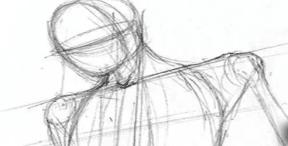
2. La trampa del detalle: Ir directo a un único elemento
Una vez superada la fase de bocetado, muchos artistas caen en otra trampa común: enfocarse obsesivamente en un solo detalle del dibujo, descuidando el resto de la composición. Es comprensible sentir el impulso de perfeccionar inmediatamente la parte que más nos emociona, pero este enfoque puede desequilibrar todo nuestro trabajo.
Imagina que has esbozado una escena épica: un vasto paisaje con un heroico personaje en primer plano. Es tentador zambullirse directamente en los detalles del rostro del protagonista, buscando capturar esa mirada intensa y determinada que has visualizado. Sin embargo, al concentrarte exclusivamente en los ojos o las facciones, corres el riesgo de descuidar elementos cruciales como la proporción del cuerpo, la relación del personaje con el entorno, o la atmósfera general de la escena.
El peligro del enfoque desequilibrado
Cuando nos centramos prematuramente en los detalles, podemos:
- Perder la coherencia global de la composición
- Crear desproporción entre las diferentes partes del dibujo
- Descuidar elementos importantes del fondo o contexto
- Agotar nuestra energía creativa en una sola área, dejando el resto de la obra sin el mismo nivel de atención
La clave está en desarrollar un enfoque holístico, trabajando en toda la imagen de manera equilibrada. Esto no significa que no puedas dedicar más tiempo a ciertas áreas, sino que debes hacerlo de forma consciente y planificada, sin perder de vista el conjunto.
Estrategias para un desarrollo equilibrado
Para evitar caer en la trampa del detalle prematuro, considera estas estrategias:
- Desarrolla los elementos principales de forma simultánea, alternando entre ellos.
- Establece niveles de detalle progresivos para toda la imagen, refinando gradualmente cada área.
- Utiliza la técnica de “squinting” (entrecerrar los ojos) para evaluar regularmente las relaciones tonales y la composición general.
- Toma descansos frecuentes para observar tu trabajo desde diferentes distancias y ángulos.
Recuerda, un dibujo excepcional no se trata solo de un detalle perfecto, sino de cómo todos los elementos se armonizan para crear una obra cohesiva y atrapante. ¿Quieres aprender a equilibrar detalles y composición? Explora técnicas avanzadas aquí y lleva tus ilustraciones al siguiente nivel.
3. La rigidez creativa: Endurecer la mano
Uno de los obstáculos más sutiles pero significativos que enfrentan los artistas principiantes es la tendencia a endurecer la mano y la muñeca mientras dibujan. Este hábito, aunque parece inofensivo, puede tener un impacto profundo en la calidad y fluidez de tus trazos, limitando tu expresión artística y causando fatiga innecesaria.
Cuando comenzamos a dibujar, es natural querer controlar cada aspecto de nuestro trazo. Inconscientemente, apretamos el lápiz con fuerza, tensamos los músculos de la mano y la muñeca, creyendo que esto nos dará más precisión y control. Sin embargo, esta tensión excesiva produce el efecto contrario: líneas rígidas, trazos temblorosos y una pérdida de la naturalidad en nuestros dibujos.
Los efectos negativos de la mano tensa
- Líneas rígidas y poco naturales
- Dificultad para crear trazos fluidos y expresivos
- Fatiga rápida de la mano y el brazo
- Limitación en la variedad de trazos y texturas
- Posible desarrollo de problemas de salud a largo plazo (como el síndrome del túnel carpiano)
Cómo lograr un trazo fluido y natural
La clave para superar este error está en aprender a relajar la mano y confiar en la fluidez natural de tu movimiento. Aquí hay algunas técnicas para lograrlo:
- Practica ejercicios de calentamiento: Antes de comenzar a dibujar, realiza algunos ejercicios simples para relajar la mano y la muñeca.
- Ajusta tu agarre: Experimenta con diferentes formas de sostener tu herramienta de dibujo. Un agarre más suelto puede proporcionar mayor libertad de movimiento.
- Dibuja desde el hombro: Para trazos más largos y fluidos, intenta mover todo el brazo desde el hombro en lugar de solo la muñeca.
- Varía la presión: Practica aplicar diferentes niveles de presión para crear variedad en tus líneas.
- Realiza ejercicios de trazo: Dedica tiempo a practicar diferentes tipos de líneas y curvas sin preocuparte por crear una imagen específica.
Recuerda, el objetivo no es tener un control absoluto sobre cada milímetro de tu trazo, sino desarrollar una conexión fluida entre tu mente creativa y tu mano. ¿Listo para liberar tu trazo? Descubre ejercicios específicos aquí y experimenta la libertad de un dibujo más suelto y expresivo.
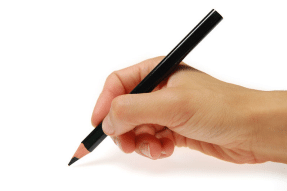
4. La búsqueda de la perfección: La línea única e infalible
Siguiendo la línea del error anterior, nos encontramos con otro hábito común entre los artistas noveles: la obsesión por encontrar y ejecutar la “línea perfecta” en cada trazo. Esta búsqueda de la perfección inmediata puede ser paralizante y contraproducente, limitando la exploración creativa y la evolución natural del dibujo.
Muchos principiantes creen que los artistas experimentados crean sus obras con líneas precisas y definitivas desde el primer momento. Sin embargo, la realidad es muy diferente. Los dibujos más impresionantes suelen ser el resultado de un proceso de construcción gradual, donde las líneas se superponen, se ajustan y se refinan continuamente.
El mito de la línea perfecta
La creencia en una línea única y perfecta puede llevar a:
- Miedo a cometer errores, lo que inhibe la experimentación
- Frustración al no lograr resultados “perfectos” inmediatamente
- Rigidez en el estilo y falta de expresividad
- Tiempo excesivo dedicado a detalles prematuros
- Dificultad para desarrollar un estilo personal fluido
Embracing the beauty of multiple lines
En lugar de buscar la perfección en cada trazo, es más productivo y liberador abrazar la belleza de las líneas múltiples y superpuestas. Este enfoque te permite:
- Explorar formas y contornos: Usa líneas ligeras y sueltas para buscar la forma correcta sin compromiso.
- Construir volumen y profundidad: Las líneas superpuestas pueden crear textura y dar vida a tus dibujos.
- Desarrollar tu estilo personal: La forma en que tus líneas interactúan puede convertirse en una característica distintiva de tu arte.
- Mejorar la fluidez: Al no preocuparte por la perfección inmediata, tus trazos se vuelven más naturales y expresivos.
- Facilitar las correcciones: Es más fácil ajustar y refinar cuando trabajas con múltiples líneas ligeras.
Para adoptar este enfoque más libre y expresivo, prueba estas técnicas:
- Comienza con trazos muy suaves y ligeros, casi imperceptibles.
- Superpón varias líneas para encontrar la forma deseada.
- Varía la presión y la velocidad de tus trazos para crear dinamismo.
- No borres las líneas “incorrectas”; úsalas como guía para refinar tu dibujo.
- Practica el dibujo gestual para capturar la esencia de las formas rápidamente.
Recuerda, el proceso de dibujo es tan importante como el resultado final. ¿Quieres liberar tu estilo y encontrar tu voz artística única? Explora técnicas innovadoras aquí y descubre cómo la imperfección puede ser tu aliada en la creación de arte memorable.
5. La visión túnel: Perder perspectiva
El último error común, pero no menos importante, es lo que podríamos llamar “visión túnel” o la tendencia a enfocarse demasiado en los detalles sin tomar distancia para evaluar el conjunto. Este hábito puede llevar a perder la perspectiva global de tu obra, resultando en composiciones desequilibradas o elementos desproporcionados.
Cuando nos sumergimos profundamente en nuestro trabajo, es fácil quedar atrapados en los pequeños detalles. Pasamos horas perfeccionando una textura o un sombreado, solo para darnos cuenta, al final, de que algo no encaja en el conjunto. Esta falta de perspectiva puede ser frustrante y costosa en términos de tiempo y esfuerzo.
Los peligros de la visión túnel
- Pérdida de la coherencia global en la composición
- Desproporción entre diferentes elementos del dibujo
- Sobrecarga de detalles en áreas que no lo requieren
- Falta de armonía en el uso de tonos y valores
- Agotamiento creativo por enfocarse demasiado en áreas específicas
Estrategias para mantener una visión global
Para evitar caer en la trampa de la visión túnel, considera implementar estas prácticas:
- Toma descansos regulares: Aléjate de tu trabajo cada 20-30 minutos para evaluarlo desde la distancia.
- Usa un espejo: Observa tu dibujo reflejado en un espejo para detectar problemas de composición o proporción.
- Rota tu trabajo: Gira tu dibujo 180 grados para verlo desde una nueva perspectiva.
- Squinting technique: Entrecierra los ojos para evaluar los valores tonales y la composición general.
- Fotografía tu progreso: Toma fotos de tu trabajo en diferentes etapas para tener una visión objetiva de su evolución.
- Pide opiniones: Comparte tu trabajo en progreso con otros artistas o amigos para obtener feedback fresco.
Mantener una visión equilibrada entre los detalles y el conjunto es crucial para crear obras coherentes y atractivas. ¿Listo para elevar tu perspectiva artística? Descubre herramientas y técnicas avanzadas aquí y aprende a evaluar y mejorar tus creaciones de manera holística.
Conclusión: Transformando errores en oportunidades de crecimiento
A lo largo de este artículo, hemos explorado los cinco errores más comunes que enfrentan los artistas principiantes en su viaje creativo. Desde la omisión del bocetado hasta la pérdida de perspectiva global, cada uno de estos desafíos representa una oportunidad única para crecer y mejorar como artista.
Recuerda, estos “errores” son parte natural del proceso de aprendizaje. No son obstáculos insuperables, sino peldaños en tu escalera hacia la maestría artística. Al identificarlos y trabajar conscientemente para superarlos, no solo mejorarás tus habilidades técnicas, sino que también desarrollarás una comprensión más profunda de tu proceso creativo.
Pasos hacia el éxito artístico
- Practica el bocetado: Haz del boceto una parte integral de tu proceso creativo.
- Desarrolla una visión holística: Trabaja en toda la composición de manera equilibrada.
- Cultiva la relajación: Aprende a dibujar con una mano suelta y fluida.
- Abraza la imperfección: Utiliza múltiples líneas para construir y refinar tus dibujos.
- Mantén la perspectiva: Evalúa regularmente tu trabajo desde diferentes ángulos y distancias.
Implementar estos cambios puede parecer desafiante al principio, pero con práctica y paciencia, se convertirán en hábitos naturales que elevarán significativamente la calidad de tu arte. Recuerda, cada gran artista ha pasado por este proceso de aprendizaje y crecimiento.
Tu viaje artístico es único y personal. No temas experimentar, cometer errores y aprender de ellos. Cada trazo, cada boceto y cada obra que crees te acerca un paso más a tu visión artística ideal. ¿Estás listo para llevar tu arte al siguiente nivel? Haz clic aquí para descubrir recursos y técnicas que impulsarán tu crecimiento artístico.
El mundo del arte está lleno de posibilidades infinitas. Con dedicación, práctica y la disposición para aprender de tus errores, no hay límite para lo que puedes crear. ¡Toma tus herramientas, libera tu imaginación y comienza a dar vida a tus visiones artísticas hoy mismo!

